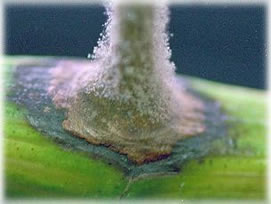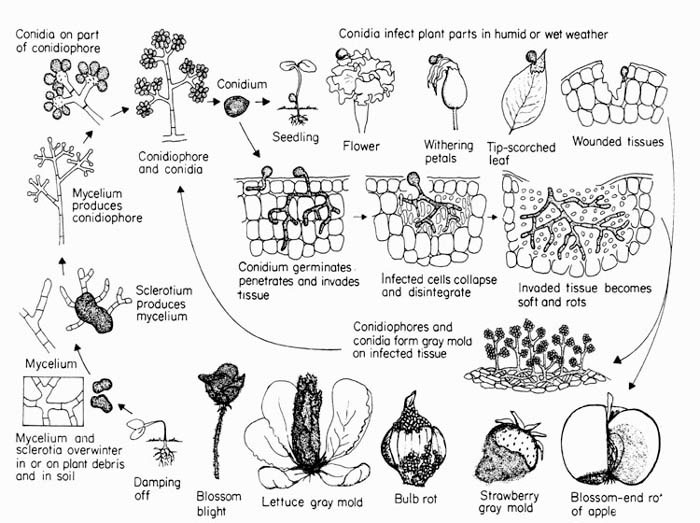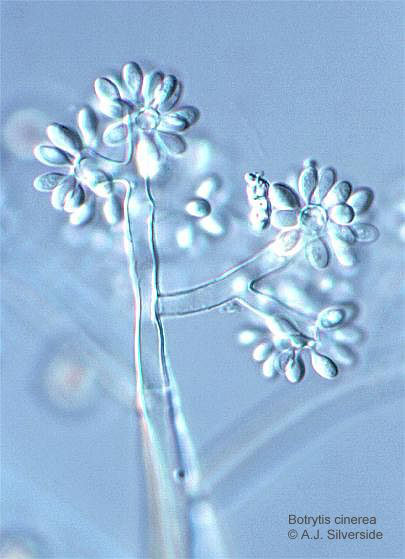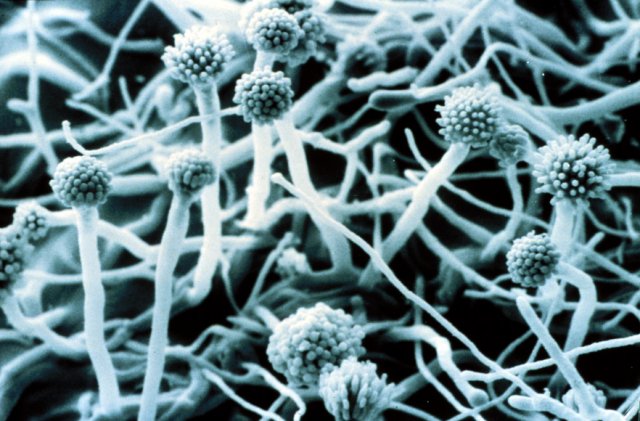

A summary of fungi and the way of life as it applies to problems with the orchid.


Underground grows the mycelium (hyphae) which consist of hyphae. These are thin white strands of flexible and elastic material. If the wires are bright white, they contain no Conidia, as they fade to brown or gray they do contain Conidia.
These conidia are created by the hyphae and are in the form of a bunch, such as grapes. See the photos at the top of the page. It created spore and dispose them. This process works best in a high humidity environment. The conditions are ideal in wet
In the hyphae is also an adhesive substance created which ensures that the conidia better attach to the plants.
If the conditions are getting less favorable for the mold it switches to the making of microconidiën and sclerotia which can survival very unfavorable conditions.
Mold spores float around in the air, it makes no sense to try to prevent them getting in your house or greenhouse. The fungal spores penetrate the plant through the inner wall in infected or damage plant parts, in dead leaves or when flowers fall off and at high humidity conditions. Whether or not germinate depends entirely on fluids (aqueous solution). The sclerotia will form hyphae. This fungus wire locks on the leaf cell wall extracts and nutrients to the cell and brings lytic (antibodies) and toxic substances in the cell of the plant. This plant tissue dies and turns brown. Once inside, the fungus grows normally. Indeed, it is moist enough in the plant.
The fungus makes carbons which solves the waxy layer on the leaf. (Eg cineran this is a type of enzyme) This chemical process ensures that the fungus can penetrate. It goes without saying that a damaged plant makes it very easy for the fungus.

Research has shown that at a humidity of 93-100% for 15 hours (also if there is water in the heart of the plant) the infection can occur in intact tissue. The ideal temperature for the mold is between 10 and 20 ° C and at a ideal humidity can be the infection take place between the 5 - and 26 ° C. The infection is visible after 24 hours.
Ventilation reduces the risk of infection detectable. At high humidity and a temperature of 16 ° C without ventilation the chance of infection is 92% and with sufficient ventilation the chance of infection dropped to 25%.
Below 10 ° C and with ventilation the spores won’t germinate at all. Unfortunately, our plants usually don’t like this temperature.
Light also affects the germination. The germination is faster in dark periods. Ca and N deficiency also lead to a faster fungal infection.
Remove leaf debris or faded leaves with a clean sharp knife and make flat wounds and treat it with an antifungal agent. Keep these plants in a dry place. Wait with mists until the wound has dried.
Removing yellow leaves are best done in the morning. The risk of infection is always lower.
The better antifungal agents are Imazalil and Scala. You can also use Zineb or Maneb.
Finally. Healthy plants makes antibodies themselves that help strengthen the cell wall. You should now understand the necessity of the removal of damaged parts of plants.


